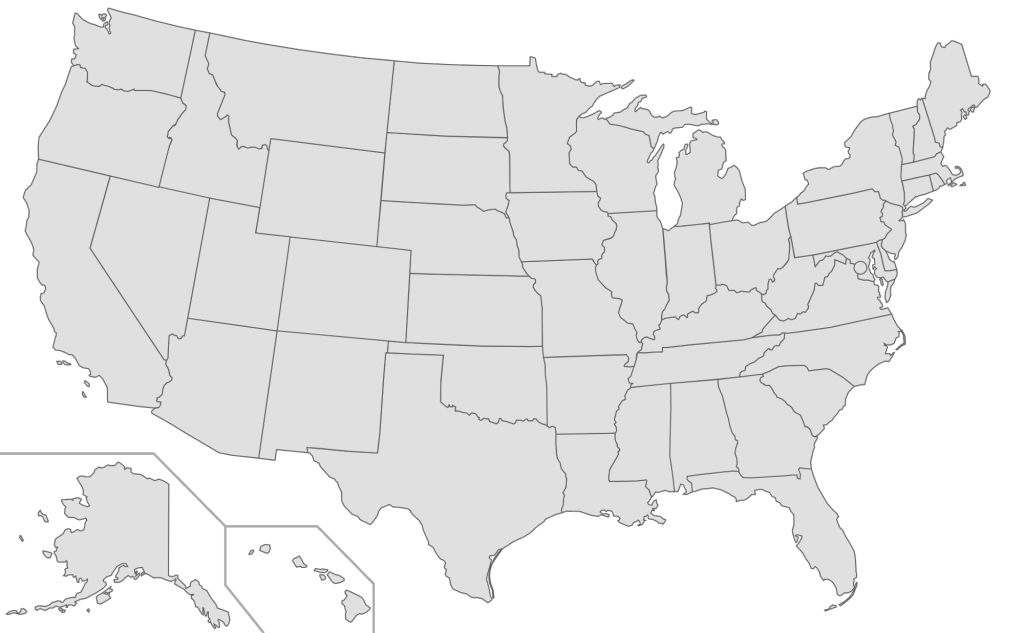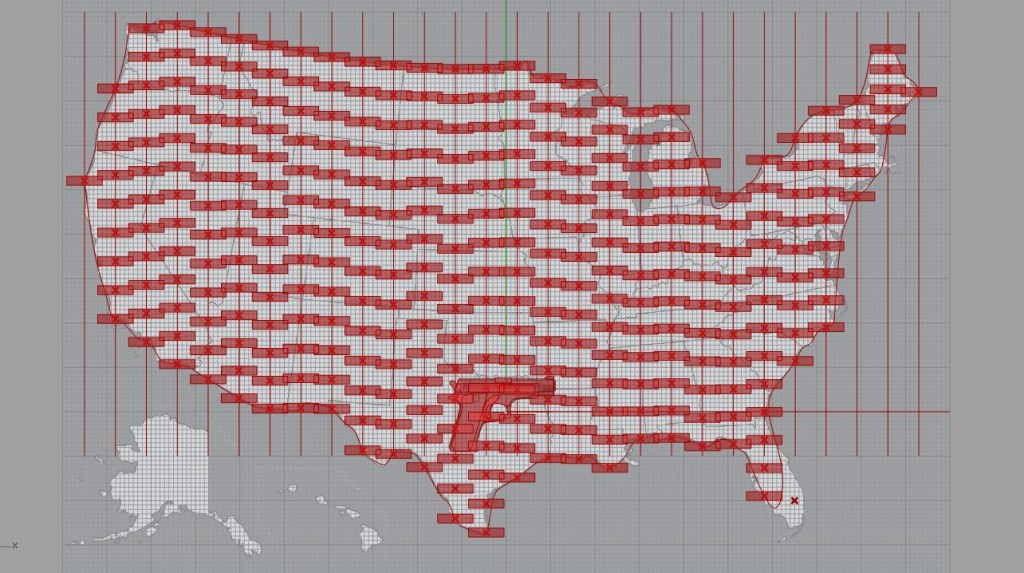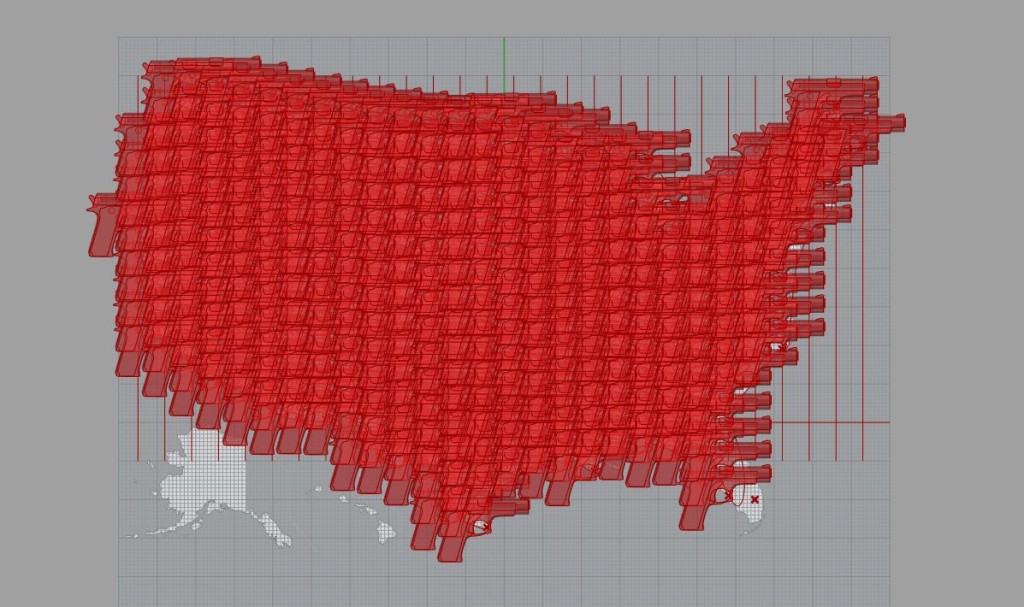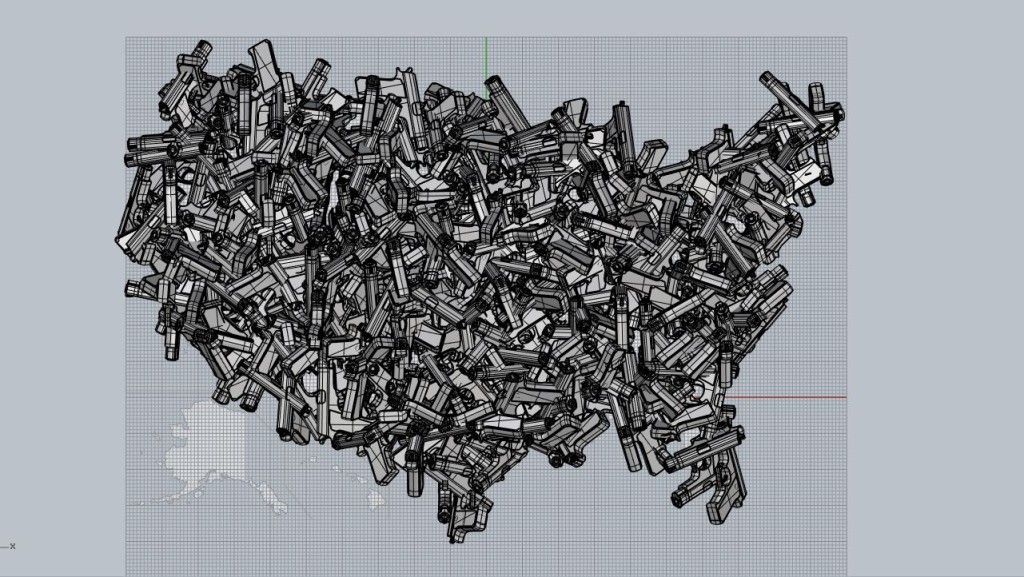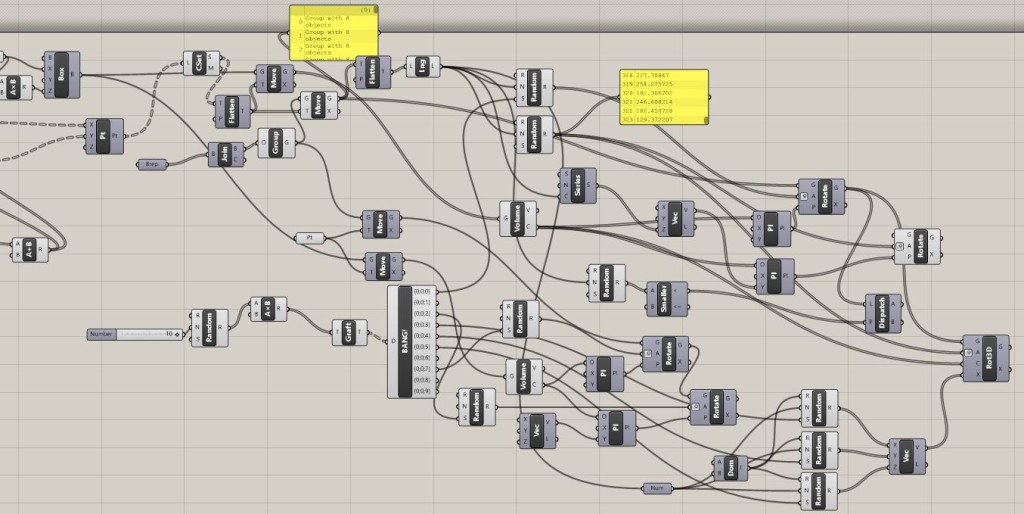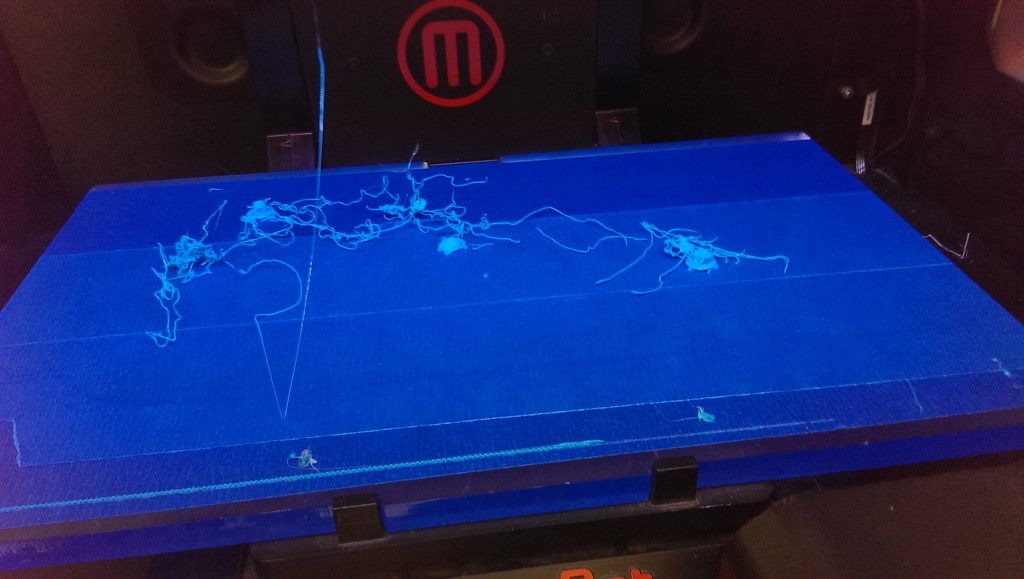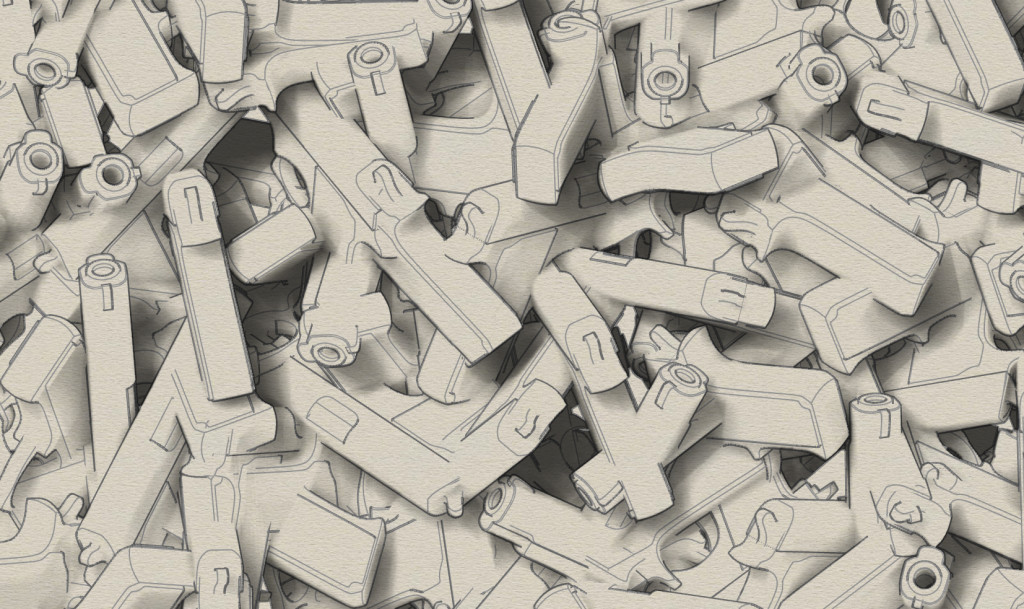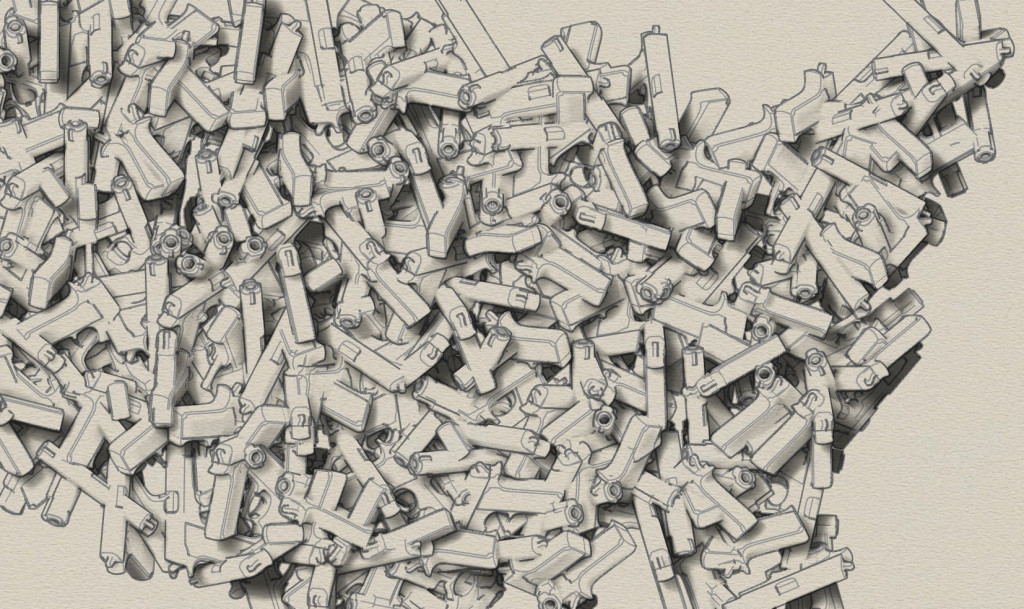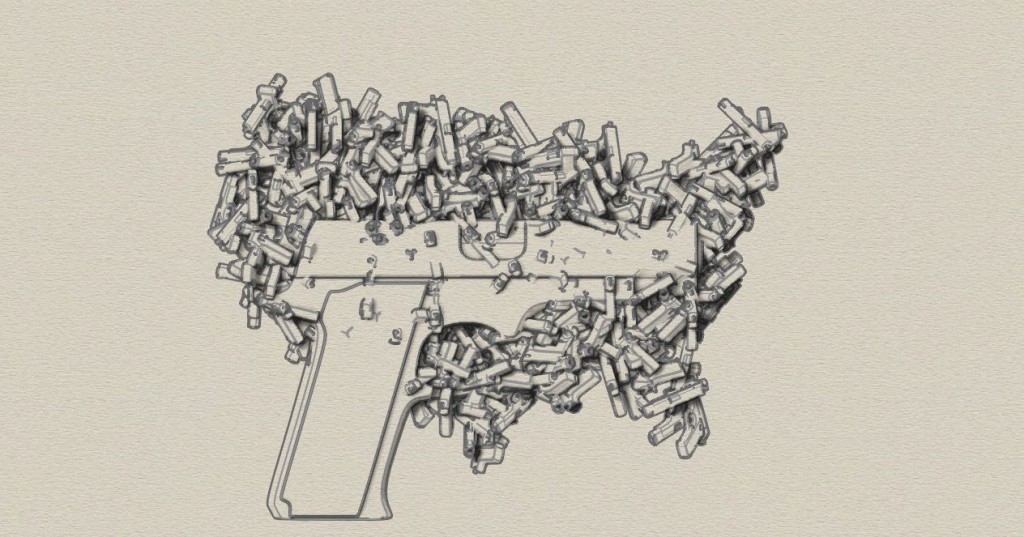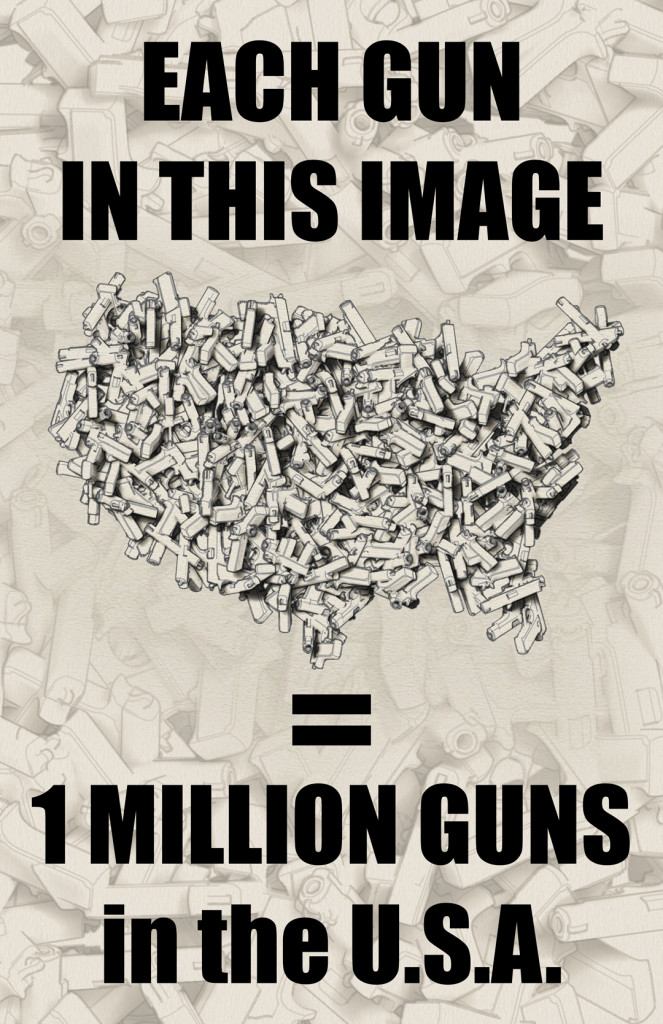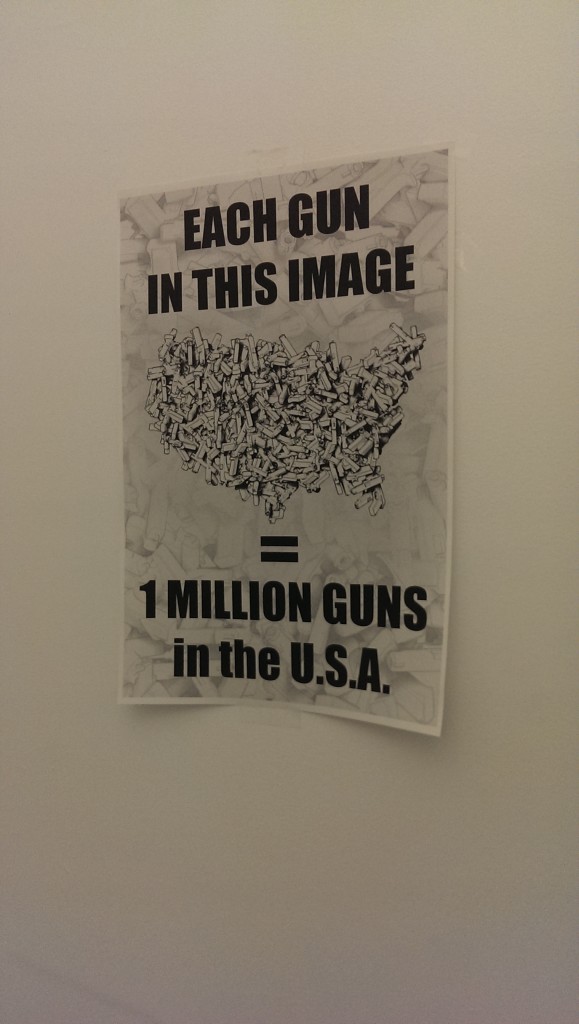Bryan / Digital Flo$$: “Nation of Guns”
As I thought about a data-driven procedural design project for this assignment, I realized I had already created a 3D digital gun model.
I also remembered that there are a LOT of guns in the United States – 1.2 guns for every person, according to recent estimates.
So I wondered – what would that look like if I used my gun model to visualize the total U.S. firearms population? What kind of impression and emotional resonance would that have? Would I have to condense down the number visualized to some representative portion of the total?
PROCESS
I started by importing a 2D U.S. map into Rhino as a reference:
Then I traced the outlines of the map and brought those curves into Grasshopper. I used the “intersection” tool to find the points at which a series of lines intersected the contours of the US; this gave me a lattice on which I could place a scalable number of points to fill the country:
Because the gun model was complex and required processing power to modify, I started testing the placement of multiple models with a series of simpler boxes, which I translated to each point in my lattice:
Once I had this working well, and scaled to a good number (~350 points for ~350 million guns in the country), I replaced the boxes with a brep version of the gun model:
Finally, I applied a series of random rotations to each gun model to create the final “prickly” look. I used several pseudo-random nodes in series to generate varying random seeds and outputs to get a more aggressively randomized effect. At the end of this generative process, I also did some fine tuning: I added one more gun to the tip of Florida to make the country shape more recognizable, and tweaked my random seed inputs until I found a rotation that gave the most visually intense effect:
Here’s my full Grasshopper layout, in two parts (from left to right):
Unfortunately, three attempts attempts at printing the model on a MakerBot failed. Simply exporting the complex shape was difficult, and the MakerBot couldn’t handle the irregular base or easily calculate support.
After 48 hours of unsuccessful 3D printing efforts, I took the procedurally-generated image in another direction. Using Rhino’s “artistic” rendering options, I exported a variety of images that captured the size, density and number of interlocking guns:
I pulled several of these images together into a “meme-ish” poster highlighting the message the project was created to convey:
…And posted it in the real world:

